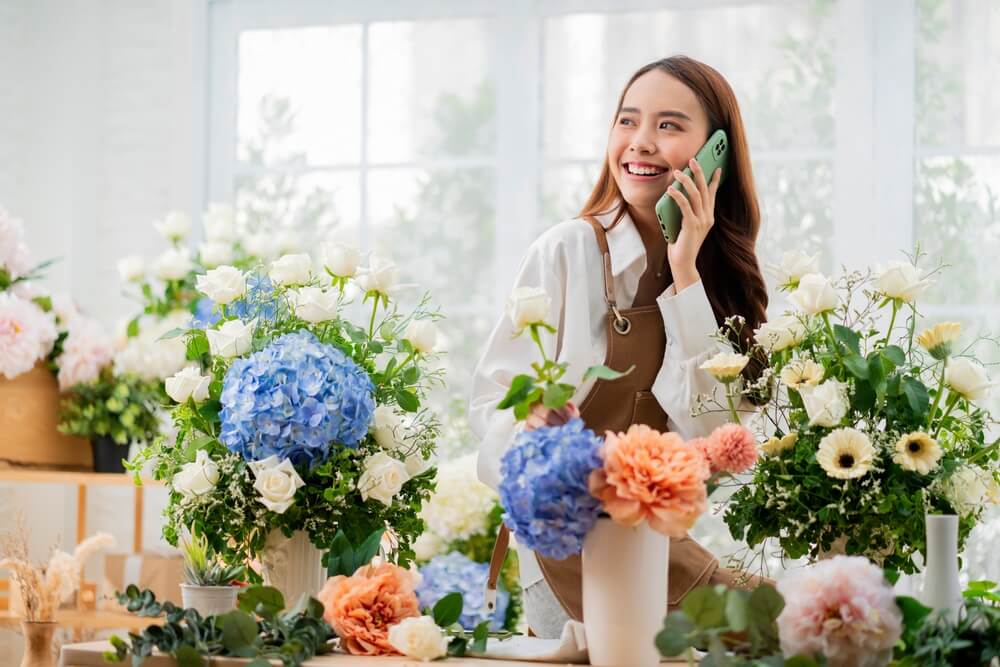Local vs. Imported Flowers: What’s Best for You?
However, a little guidance on sourcing, sustainability, price, and availability would allow you to reconcile with your values, budget, and requirements for the two types.

One of the most overlooked decisions when buying flowers in the United States-whoever required for the occasion or merely for enjoyment whether to go for local or imported flowers. Both choices have their advantages and disadvantages. However, a little guidance on sourcing, sustainability, price, and availability would allow you to reconcile with your values, budget, and requirements for the two types.
Sourcing and Origin
Most overseas cultivated flowers are usually from warm-weather countries like Colombia, Ecuador, and Kenya. These areas are also equipped for large-scale flower farming. The flowers are harvested, packaged, and transported over long distances, often arriving in the United States through floral international distribution hubs like Miami.
On the contrary, old city flowers Philadelphia, those grown locally are cultivated inside the United States, often on smaller regional farms, and are mostly delivered directly to florists, farmers' markets, or consumers on shortened supply chains.
Sustainability and Environmental Impact
Sustainability is, therefore, a major factor when comparing local versus imported flowers. Imported flowers need air freight, refrigeration, and packaging across long journeys to keep their freshness. Such processes are known to contribute mainly to carbon emissions and energy consumption. Also, labor and environment regulations can be a bit flimsy in some exporting countries, raising concerns about the use of pesticides and fair pay for workers.
Local flowers, instead, usually carry the lowest carbon footprints due to a need for less transportation and storage. Many small organic or sustainably run local growers are also able to support biodiversity. The other major point is that buying locally supports the agricultural economy in the United States while promoting the use of seasonal flowers with easy flower delivery in Philadelphia.
Cost Differences
In the great majority of cases, imported flowers will be less expensive if you take into consideration factors of scale, production, and the larger flower-exporting countries. Big farms produce large volumes of blooms for little money, and many florists in the United States rely on imports for the popular flowers—roses, lilies, and carnations—available almost year-round.
Yet, local could also be cost-competitive, depending on the season and the flower type. In peak bloom seasons, which are generally spring through early fall, local flowers from florists in Philadelphia tend to be plentiful, fresh, and sometimes less expensive than imports. You will be paying a little bit more for specialty or heirloom varieties, but usually the money is worth it for their freshness and uniqueness.
Availability and Variety
Imported flowers are thus available for year-round use. So, whether you want them in December or August, peonies or tulips, imports come through for you. This add-on is especially helpful for weddings and events that are particular about a floral theme or color palette.
Local flowers, on the other hand, are seasonal, therefore limiting your selection throughout the year to only what is in bloom at that time. For some, that can be a drawback, but many florists and customers embrace the charm of seasonal arrangements available at a flower shop in Philadelphia, along with the freshness.
The choice between local and imported flowers boils down to individual preference. If you have a passion for sustainability, supporting local farmers, or seasonality, then you would lean toward flowers from local growers. However, on occasions where specific blossoms are required at certain times of the year, or if there's a limited budget, then imported flowers would serve the purpose better. A nice balance somewhere in between allows for a beautiful combination of variety, quality, and conscience.
Recent Posts
Year : 2025
Year : 2024
Year : 2023

